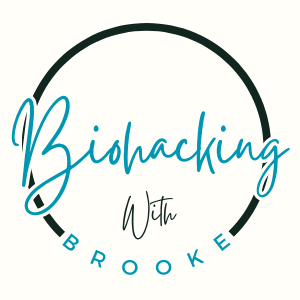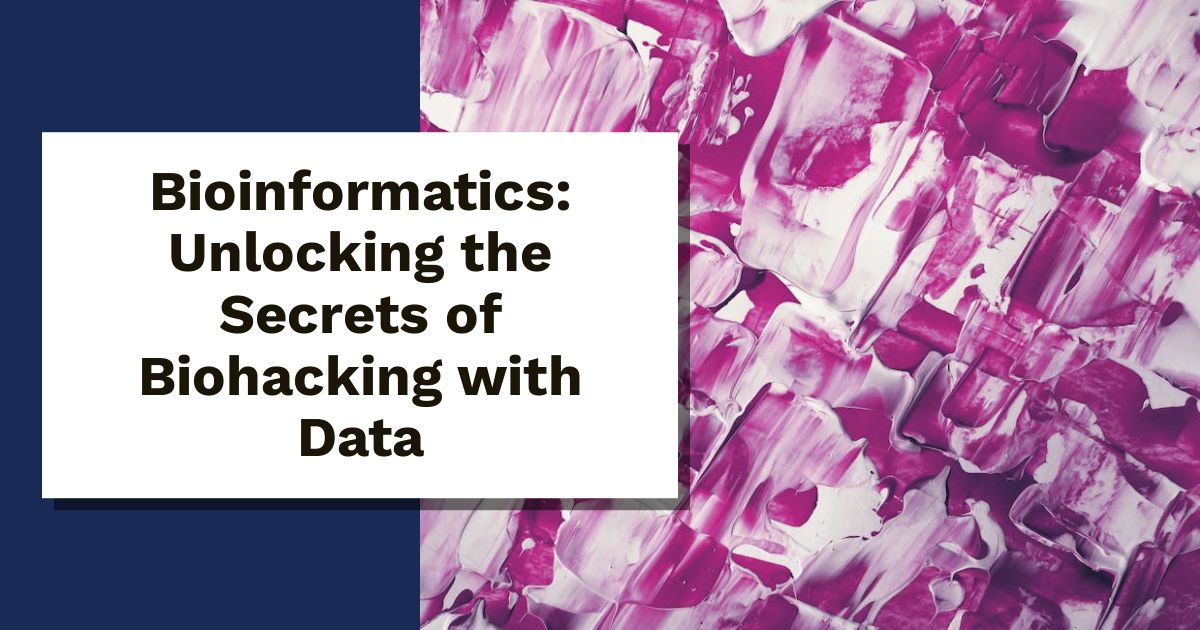Bioinformatics is changing how we think about biohacking. It combines biology and data to unlock insights about our bodies and minds. With the right data, we can understand our genetics, diets, and even our health.
Ever wondered how your smartphone can help you hack your biology? By using bioinformatics, you can turn raw data into actionable strategies. This post will show you how to use data to enhance your biohacking journey.
Get ready to explore the tools and techniques that make bioinformatics essential for any biohacker. With this knowledge, you can optimize your health and well-being like never before. Let’s dive in and discover the data-driven secrets behind biohacking!
What is Bioinformatics?
Bioinformatics blends biology with data science, allowing us to explore life at its core. By collecting and analyzing biological data, we gain insights into our health, genetics, and even nutrition. Imagine having a personal coach who uses tons of data to tailor plans just for you—that’s bioinformatics in action!
The Fusion of Biology and Data
In bioinformatics, biology and data science team up to unlock mysteries hidden in our DNA and other biological systems. This fusion helps scientists and health enthusiasts alike understand complex biological information through data analysis. It’s like turning a noisy jumble of notes into a beautiful symphony.
For example, when you sequence your DNA, bioinformatics tools process that data to reveal genetic predispositions and health risks. This data-driven approach transforms raw biological data into meaningful insights that anyone can use to optimize their health and lifestyle. With bioinformatics, we can analyze everything from gene sequences to protein structures, leading to personalized medicine and even targeted biohacking strategies.
Curious to learn more? Check out what bioinformatics is for a deeper dive.
Key Tools in Bioinformatics
To navigate the world of bioinformatics, a variety of tools and software are at our disposal. Here are some popular ones that are essential for anyone interested in this field:
- BLAST (Basic Local Alignment Search Tool): This tool helps compare genetic sequences and find similarities. It’s a fundamental resource for researchers analyzing DNA and protein sequences.
- MAFFT (Multiple Sequence Alignment): This tool allows scientists to align multiple sequences simultaneously, making it easier to spot differences and similarities across species.
- RStudio: A powerful environment for statistical computing and graphics, RStudio is highly regarded in bioinformatics for its vast selection of packages catering to various analysis needs.
- Geneious: An all-in-one bioinformatics software platform that simplifies sequence alignment, primer design, and molecular cloning.
- Galaxy: A web-based platform that enables users to perform complex analyses without needing extensive programming knowledge. It’s user-friendly and great for newcomers.
These tools make bioinformatics accessible to both researchers and biohackers. By harnessing the power of software and databases, you can analyze your biological data effectively. Explore more about these tools here.
With bioinformatics, you’re now equipped to take your biohacking journey to the next level!
Why Bioinformatics Matters for Biohacking
Bioinformatics serves as a powerful tool for biohackers, helping them unlock a deeper understanding of their health and genetic potential. By combining biological data with analytical tools, individuals can discover ways to optimize their well-being. Let’s look at how this data-driven approach reshapes our biohacking journey.
Optimizing Health with Data
With bioinformatics, tracking your health becomes a game of numbers and insights. Imagine you could access detailed reports on your genetic predispositions, nutrient deficiencies, and potential health risks—all at your fingertips! This is where bioinformatics shines. It allows you to:
- Monitor Vital Health Metrics: You can track your heart rate, sleep patterns, and caloric intake to make informed changes. Bioinformatics tools help visualize this data, turning raw numbers into actionable insights.
- Personalize Nutrition: Knowing what your body needs is key. By analyzing your genetic data, you can tweak your diet to eat foods that complement your unique genetic makeup. Curious about how bioinformatics influences health? Check out this article on unlocking health insights.
- Manage Diseases: With a clearer understanding of genetic risks, you can engage in preventative measures. Bioinformatics helps identify potential health issues before they arise, enabling a proactive approach to wellness.
In sum, bioinformatics empowers you to take control of your health through data, ensuring that every decision you make is rooted in scientific understanding.
Gene Editing and Bioinformatics
Gene editing is revolutionizing the field of genetics, and bioinformatics plays a pivotal role in this excitement. By providing tools to understand and manipulate genetic sequences, it paves the way for innovations in healthcare and biohacking. Here’s how:
- Designing Custom Gene Edits: Bioinformatics allows scientists to pinpoint exact locations in the DNA where changes are made. Techniques like CRISPR rely on bioinformatics for efficient and precise editing. Explore more on this topic with a look at the current bioinformatics tools for CRISPR.
- Evaluating Off-Target Effects: One of the main concerns with gene editing is unintended consequences. Bioinformatics tools can analyze potential off-target effects, ensuring that the changes made are safe and effective. This gives biohackers confidence as they explore genetic modifications.
- Understanding Complex Interactions: Gene editing doesn’t happen in isolation. Bioinformatics helps make sense of how various genes interact with each other, providing a more comprehensive view of the genome. This insight is vital for anyone looking to make targeted changes to their biology.
Using bioinformatics in gene editing is about evolution—it’s about understanding what’s possible and how to safely navigate the landscape of your genetic blueprint.
The Process of Bioinformatics in Biohacking
Bioinformatics plays a crucial role in the world of biohacking, transforming how we gather and analyze biological data. This process allows us to tap into the secrets of our biology in an engaging and personalized way. Let’s take a closer look at how this data is collected and analyzed for biohacking benefits.
Data Collection Methods
Data collection in bioinformatics is like gathering ingredients for a complex recipe. Each piece of information has a purpose and contributes to the final dish. Here are some primary methods used to collect biological data:
- Genetic Sequencing: This method decodes the DNA sequences, providing a blueprint of an individual’s genetics. Technologies like next-generation sequencing have made this faster and more affordable.
- Wearable Devices: Fitness trackers and smartwatches collect real-time data about heart rate, sleep patterns, and activity levels. The data they provide can be invaluable for tailoring biohacking strategies.
- Survey and Self-Reporting: Gathering subjective data through questionnaires about lifestyle, diet, and health helps build a comprehensive bio profile. This information can pinpoint areas for improvement.
- Biobanks: These are repositories of biological samples, such as blood or tissue, linked to detailed health data. They allow researchers to study genetic and environmental factors affecting health.
- Clinical Trials: Participating in clinical research studies generates substantial data on health outcomes, which can be analyzed to discover new biohacking insights.
By utilizing these diverse methods, bioinformatics collects a wealth of information that serves as the foundation for analyzing health and wellness. For more on the intricacies of collecting data, check out this article on collecting and harvesting biological data.
Analyzing Biological Data
Once the data is collected, the next step is analysis. Think of this as cooking with the collected ingredients—it’s where the magic happens. Here’s how bioinformatics analyzes this data for biohacking benefits:
- Statistical Analysis: This involves using tools to explore patterns and correlations in the data. By identifying trends, biohackers can make informed decisions on health interventions.
- Machine Learning: By employing algorithms that learn from data, researchers can predict outcomes based on various input factors. This allows for personalized recommendations tailored to an individual’s biology.
- Comparative Genomics: By comparing genetic data across different individuals or species, bioinformatics uncovers evolutionary patterns and potential health risks. This insight makes it easier to pinpoint specific genetic markers associated with certain conditions.
- Data Visualization: Presenting complex biological data in visual formats, like charts and graphs, helps biohackers understand their health metrics at a glance.
- Integrative Analysis: Bringing together data from various sources (e.g., genomic, proteomic, and metabolomic data) allows for a holistic view of an individual’s biology. This comprehensive approach leads to more precise biohacking strategies.
With these analytical techniques, bioinformatics provides robust insights that empower individuals to optimize their health. Curious about the nuts and bolts of analyzing biological data? Learn more from this guide on analyzing biological data.
Future of Bioinformatics in Biohacking
As we look ahead, the fusion of bioinformatics and biohacking is set to curate thrilling advancements. Think of it as the ultimate toolkit for the modern biohacker, offering unprecedented insights and capabilities. By harnessing emerging technologies, biohackers can tap into the potential for customized health solutions that were once only dreams.
Emerging Technologies
New technologies continuously reshape our understanding of biology and health. These innovations promise to enhance how biohackers experiment and optimize their well-being. Here are a few exciting developments to watch:
- Artificial Intelligence: AI algorithms can analyze vast amounts of biological data, identifying patterns that humans might miss. This capability can lead to personalized health recommendations tailored just for you.
- Wearable Tech: Devices that track everything from heart rate to sleep quality are becoming more sophisticated. They provide real-time feedback, empowering biohackers to adjust their strategies on the fly.
- CRISPR and Gene Editing: Techniques like CRISPR allow for precise genetic modifications. As bioinformatics tools evolve, so will the ease with which biohackers can edit their genetic blueprints, potentially enhancing physical abilities or health.
- Big Data Analytics: The ability to analyze large datasets will unveil connections between genetics, lifestyle choices, and health outcomes. Biohackers can then tailor their environments to optimize their health.
Stay informed on the future of biohacking and its intersect with new technologies by checking out this piece on the current state and future of biohacking.
Community and Collaboration
The biohacking community thrives on collaboration and knowledge sharing, especially when it comes to bioinformatics. Working together amplifies the learning and discoveries in this fast-evolving field. Here’s how community engagement can enhance biohacking:
- Shared Databases: Many biohackers contribute to public databases, allowing others access to genetic information and health data. This collective effort supports faster breakthroughs and encourages diverse input.
- Open Source Tools: With the rise of open-source platforms, biohackers can develop and modify bioinformatics tools collaboratively. This sharing fosters innovation and allows for diverse approaches to problem-solving.
- Workshops and Events: Community-driven workshops enable knowledge sharing. Whether it’s learning the latest in gene editing or effective data collection methods, there’s always something new to learn alongside fellow biohackers.
- Online Forums and Groups: Platforms like Reddit host discussions where biohackers share experiences and insight. Questions like the role of bioinformatics in biohacking are explored, helping newcomers gain confidence.
Embracing collaboration can unlock enormous potential in biohacking pursuits. Get more insights about community actions in bioinformatics by exploring this guide on building a successful bioinformatics community.
As technology advances and collaboration grows, the future of bioinformatics in biohacking promises to be both exciting and transformative!
Conclusion
Bioinformatics is revolutionizing the world of biohacking. By turning complex biological data into actionable insights, it empowers individuals to optimize their health like never before.
With tools at your disposal, you can unlock your unique health potential. Imagine personalizing your nutrition, managing risks, and even exploring gene editing—all with the help of data.
As you step into this innovative frontier, stay curious. What new health strategies will you uncover through bioinformatics? The journey of self-discovery awaits.
Brooke is a rock-climbing 🧗♀️, tennis-playing 🎾, biohacking 🧬 bookworm 📚 on a mission to unlock the secrets of health, longevity, and living life to the fullest 🌟. When she’s not scaling cliffs, hitting the courts, or testing out the latest hacks, you’ll find her nose in a book or adventuring with her four-legged best friend 🐕 by her side. With a knack for turning science into simple, actionable tips, Brooke’s writing is your guide to hacking your biology and living your best, most vibrant life!


